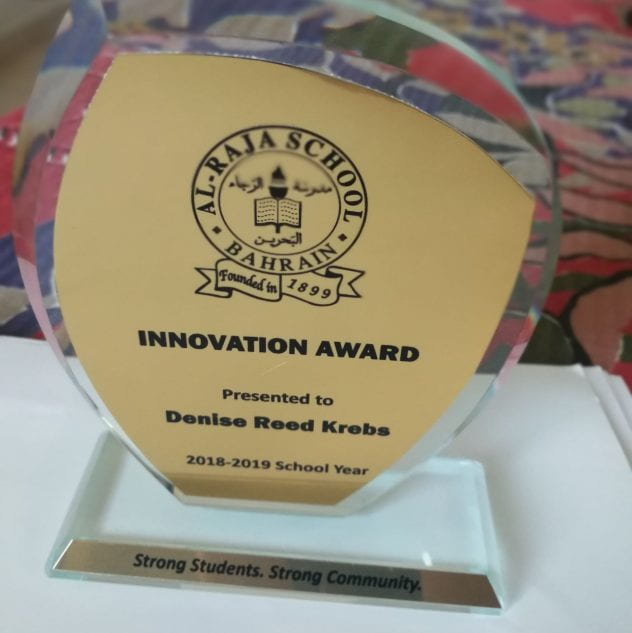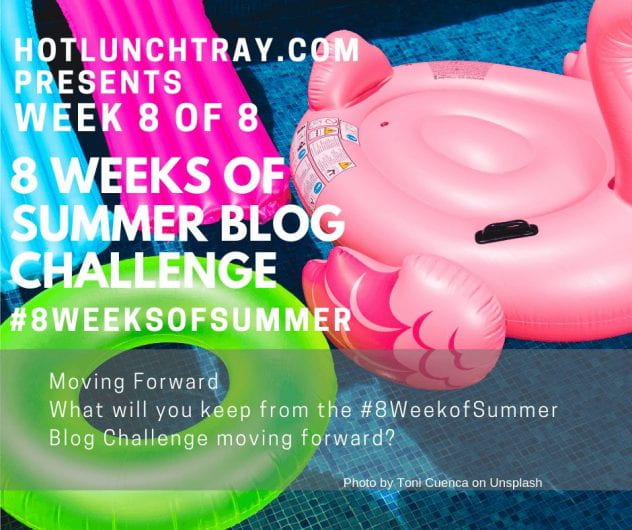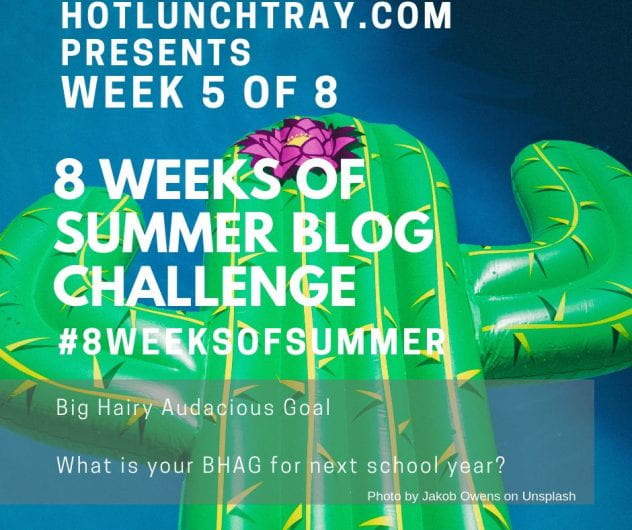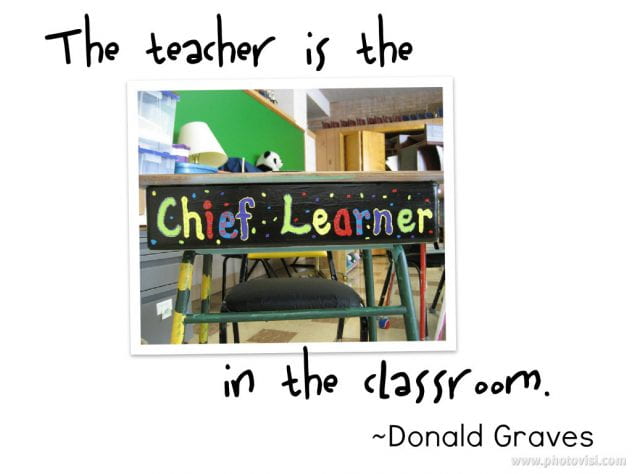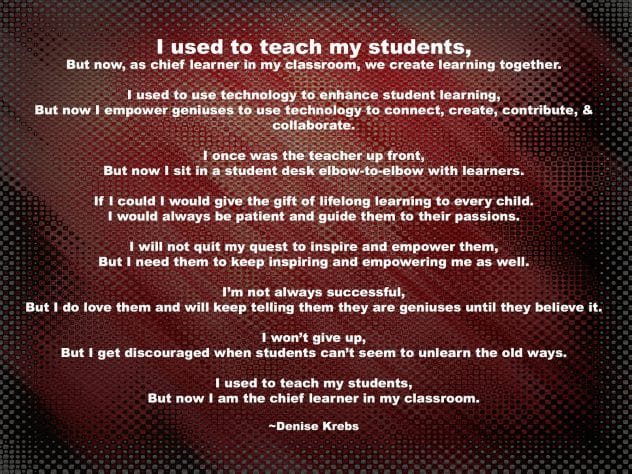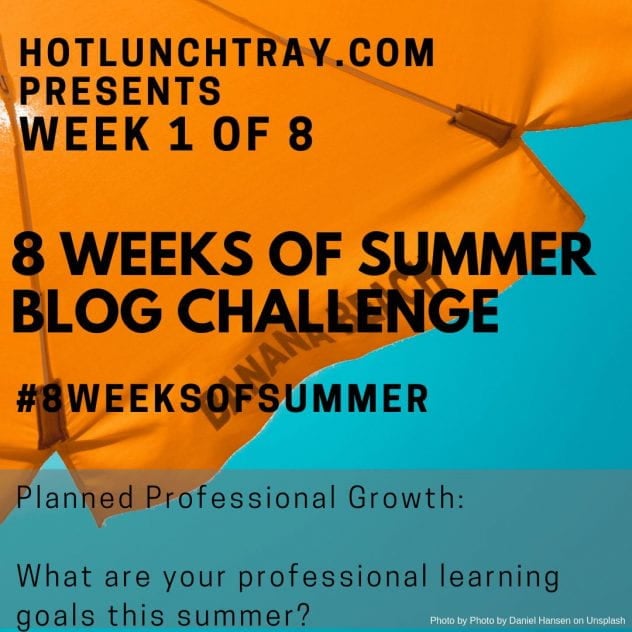This post is week 2 of 8 in the 8 Weeks of Summer Blog Challenge for educators.
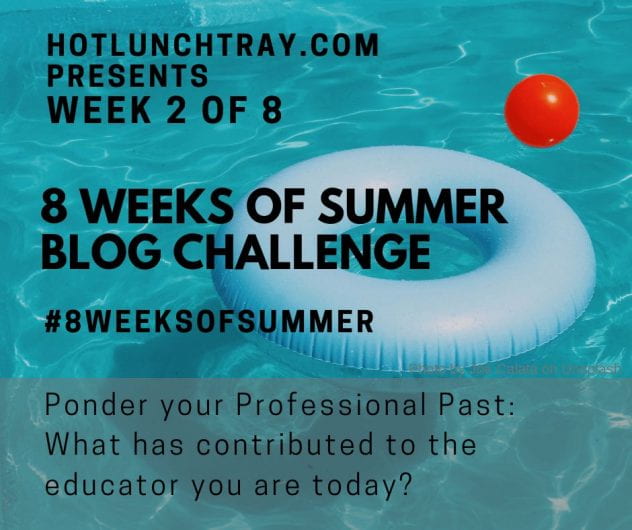
Who or what experiences have built you up into the educator you are today?
Joy Kirr’s post is the first I read during Week 2 of the challenge. Her story is familiar to me, as I’ve heard her tell it before. It also runs parallel to my own story, which began at about the same time.
I had been teaching since 1984–sometimes to a group of grade 2, grade 3, grade 7, grade 8, as a reading specialist with small groups of children, or for ten years as a stay-at-home mom with my two daughters. I loved all my students and schools. I always felt I was out-of-the-box and looking for how to be better.
However, in late 2010, something switched for me. Two colleagues came back from the Iowa Technology Education Conference and told me that teachers were using Twitter. OK, I thought. So what. They continued telling me about the connections they made, the Web 2.0 tools they discovered, the people that inspired them. They told me enough that I got interested and began exploring with them.
One of my first tweets happened while I sat at a Digital Literacy conference with Angela Maiers. I was at a table with Erin Olson, Stacy Brown, Brenda Ortmann, and Eileen Kinney listening to Angela’s challenging message. As you can see that uphill was a steep learning curve for me in more ways than one. I had to figure out the difference between # and @ on Twitter.
Angela Maiers was inspiring and challenging. Here is the post referred to in the tweet below. The people I met on Twitter enabled me to learn much more than I was used to learning. I began to read more books, read and write more blog posts, and I learned in a new and exciting way how to own my own learning, how to take responsibility for making a new way.
When I was searching for my first tweets, I also ran across this one I wrote in 2011 to Jee Young Kim. At that time, I was helping someone find resources to teach overseas. I myself had never been out of North America, but here I was saying, “Maybe someday I’ll be able to teach overseas!” What? I was sure I was making that up to be polite or make conversation. I had never had that thought before. But three years later I was doing just that!
I have now been teaching in Bahrain for six years. Thankfully, the things I learned from others and my commitment to innovation and improvement have not stopped.
I’m still connected with educators all over the world through Twitter. Even though education is much more traditional here, we are still growing professionally at each turn. Soon we will have the third annual EdCampBahrain. We have quarterly TeachMeets and hashtags to share our learning in the Middle East (#bahrainedu, #edchatMENA)
Then today I humbly received one of my Principal’s Innovation Awards at our school for engaging my students with things like blogging, Pearls of Wisdom, and Genius Hour.
Life is sweet, and there is such joy in this journey. I am very thankful for those who taught me what I know and for those who continually teach and challenge me.
